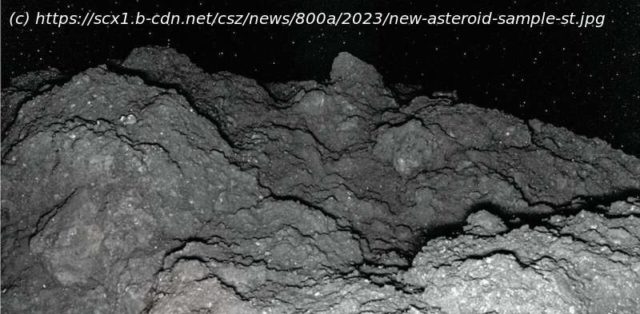How did life come about? The answer to this question goes to the very heart of our existence on planet Earth.
How did life come about? The answer to this question goes to the very heart of our existence on planet Earth.
Did life simply arise from chemical reactions among organic compounds in a primordial soup left after Earth clumped together from space rubble? If so, where did the organic compounds come from?
Some of the so-called „building blocks of life“ may have been surprisingly common in the early Solar System.
A team of Japanese and American scientists led by Yasuhiro Oba has analyzed samples taken from the asteroid Ryugu in 2018 by the Hayabusa2 mission and found uracil, one of the five key bases of the RNA and DNA molecules that are crucial to life as we know it. Their study was published March 21 in Nature Communications.
At the most basic level, the development of life is a matter of combining simple organic molecules into increasingly complex compounds that can participate in the myriad reactions associated with a living organism.
Simple amino acids are believed to act as building blocks in the construction of these more complex molecules. But this isn’t just a simple random combination exercise.
The largest „chunk“ of the human genome, chromosome 1, is made up of 249 million base pairs (the rungs on the twisted ladder of the DNA molecule). Each base pair is made of two bases: either guanine and cytosine, or adenine and thymine.
Building from the simple base pair chemicals to a full strand of DNA is a massive undertaking.






